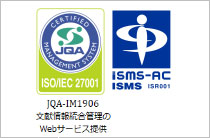ホームIMICライブラリMMWR抄訳2016年(Vol.65)CDC Grand Rounds:モデリングおよび・・・
2016/12/09Vol. 65 / No. 48
MMWR65(48):1374-1377
CDC Grand Rounds: Modeling and Public Health Decision-Making
CDC Grand Rounds:モデリングおよび公衆衛生の政策決定
さまざまなデータソースを取り込み、世界各地における感染症の伝播をコンピューター化する数学的モデルは公衆衛生の政策決定をサポートする重要なツールであり、異なるシナリオの効力と実現可能性の評価および疾患の発現、拡大およびコントロールに関する見識をまとめるために使用される。過去10年において、数学的モデルは感染性疾患発症の可能性やその規模の予測に使用され、重症急性呼吸器症候群やパンデミックインフルエンザのアウトブレイクに対するリアルタイムでの緊急対応を可能とした。また、感染性疾患アウトブレイクや緊急事態に対する準備計画を改善し、エボラ出血熱のアウトブレイクの際はアメリカに拡大した場合の患者の治療計画、パンデミックH1N1アウトブレイク後はリスクの高い18歳未満の小児におけるインフルエンザ関連死または入院例を予測するモデルが開発された。これらのモデルによる予測データと実際のデータには乖離があるものの、過去のアウトブレイクから新たなデータを取り込むことでモデルをさらに改善し、より精度の高い予測が可能となり、公衆衛生政策を決定する上で重要な情報を与えうると思われる。
References
- Meltzer MI, Atkins CY, Santibanez S, et al. Estimating the future number of cases in the Ebola epidemic—Liberia and Sierra Leone, 2014–2015. MMWR Surveill Summ 2014;63(1).
- Fraser C, Riley S, Anderson RM, Ferguson NM. Factors that make an infectious disease outbreak controllable. Proc Natl Acad Sci U S A 2004;101:6146–51. <http://dx.doi.org/10.1073/pnas.0307506101>
- Meyers LA, Pourbohloul B, Newman MEJ, Skowronski DM, Brunham RC. Network theory and SARS: predicting outbreak diversity. J Theor Biol 2005;232:71–81. <http://dx.doi.org/10.1016/j.jtbi.2004.07.026>
- Dimitrov NB, Goll S, Hupert N, Pourbohloul B, Meyers LA. Optimizing tactics for use of the U.S. antiviral strategic national stockpile for pandemic influenza. PLoS One 2011;6:e16094. <http://dx.doi.org/10.1371/journal.pone.0016094>
- Lipsitch M, Finelli L, Heffernan RT, Leung GM, Redd SC; 2009 H1n1 Surveillance Group. Improving the evidence base for decision making during a pandemic: the example of 2009 influenza A/H1N1. Biosecur Bioterror 2011;9:89–115.
- Glasser JW, Hupert N, McCauley MM, Hatchett R. Modeling and public health emergency responses: lessons from SARS. Epidemics 2011;3:32–7. <http://dx.doi.org/10.1016/j.epidem.2011.01.001>
- Cauchemez S, Epperson S, Biggerstaff M, Swerdlow D, Finelli L, Ferguson NM. Using routine surveillance data to estimate the epidemic potential of emerging zoonoses: application to the emergence of US swine origin influenza A H3N2v virus. PLoS Med 2013;10:e1001399. <http://dx.doi.org/10.1371/journal.pmed.1001399>
- Biggerstaff M, Alper D, Dredze M, et al.; Influenza Forecasting Contest Working Group. Results from the Centers for Disease Control and Prevention’s predict the 2013–2014 Influenza Season Challenge. BMC Infect Dis 2016;16:357. <http://dx.doi.org/10.1186/s12879-016-1669-x>
- CDC. CDC announces winner of the ‘Predict the Influenza Season Challenge.’ Atlanta, GA: US Department of Health and Human Services, CDC; 2015. <http://www.cdc.gov/flu/news/predict-flu-challenge-winner.htm>
- Association of Public Health Laboratories. Influenza virologic surveillance right size roadmap. Silver Spring, MD: Association of Public Health Laboratories; 2013. <https://www.aphl.org/AboutAPHL/publications/Documents/ID_July2013_Influenza-Virologic-Surveillance-Right-Size-Roadmap.pdf>
- Meltzer MI, Santibanez S, Fischer LS, et al. Modeling in real time during the Ebola response. MMWR Suppl 2016;65:85–9.
- Rainisch G, Shankar M, Wellman M, Merlin T, Meltzer MI. Regional spread of Ebola virus, West Africa, 2014. Emerg Infect Dis 2015;21:444–7. <http://dx.doi.org/10.3201/eid2103.141845>
- Scarpino SV, Iamarino A, Wells C, et al. Epidemiological and viral genomic sequence analysis of the 2014 Ebola outbreak reveals clustered transmission. Clin Infect Dis 2015;60:1079–82.
- Shrestha SS, Swerdlow DL, Borse RH, et al. Estimating the burden of 2009 pandemic influenza A (H1N1) in the United States (April 2009–April 2010). Clin Infect Dis 2011;52(Suppl 1):S75–82. <http://dx.doi.org/10.1093/cid/ciq012>
- Reed C, Angulo FJ, Swerdlow DL, et al. Estimates of the prevalence of pandemic (H1N1) 2009, United States, April–July 2009. Emerg Infect Dis 2009;15:2004–7. <http://dx.doi.org/10.3201/eid1512.091413>
- Hatchett RJ, Mecher CE, Lipsitch M. Public health interventions and epidemic intensity during the 1918 influenza pandemic. Proc Natl Acad Sci U S A 2007;104:7582–7. <http://dx.doi.org/10.1073/pnas.0610941104>
- Medlock J, Meyers LA, Galvani A. Optimizing allocation for a delayed influenza vaccination campaign. PLoS Curr 2009;1:RRN1134.
- Rainisch G, Asher J, George D, et al. Estimating Ebola treatment needs, United States [letter]. Emerg Infect Dis 2015;21:1273–5. <http://dx.doi.org/10.3201/eid2107.150286>
- Borse RH, Shrestha SS, Fiore AE, et al. Effects of vaccine program against pandemic influenza A(H1N1) virus, United States, 2009–2010. Emerg Infect Dis 2013;19:439–48. <http://dx.doi.org/10.3201/eid1903.120394>
- Kostova D, Reed C, Finelli L, et al. Influenza illness and hospitalizations averted by influenza vaccination in the United States, 2005–2011. PLoS One 2013;8:e66312 <http://dx.doi.org/10.1371/journal.pone.0066312. >
Copyright © 2013 International Medical Information Center. All Rights Reserved.












